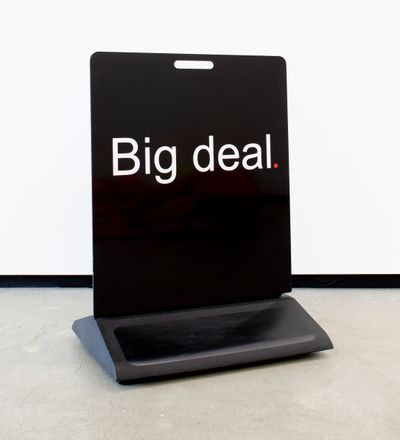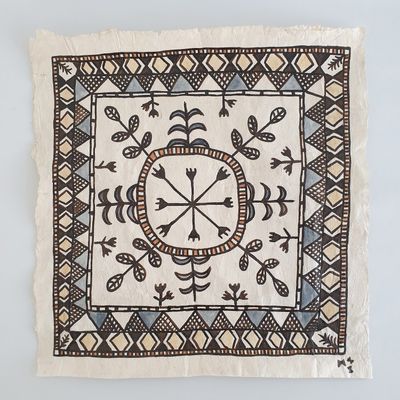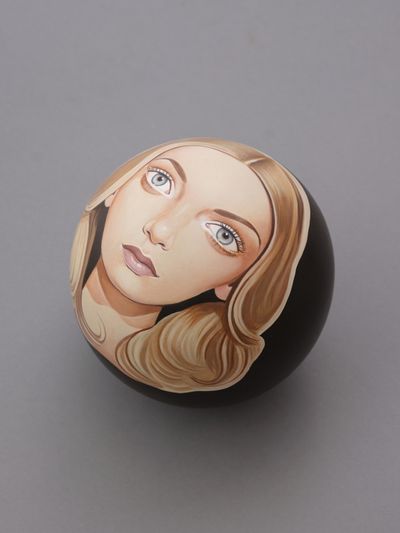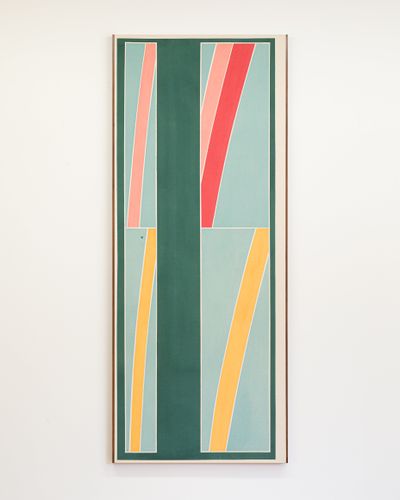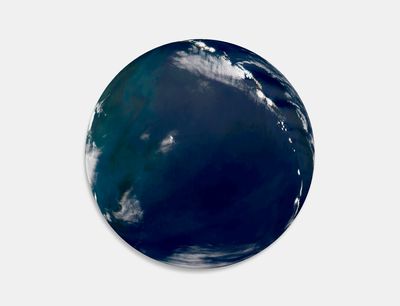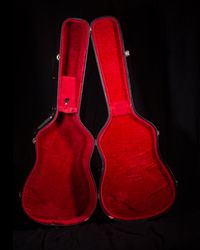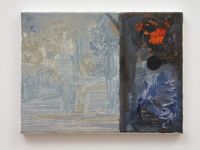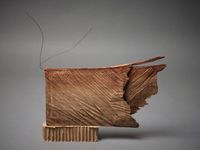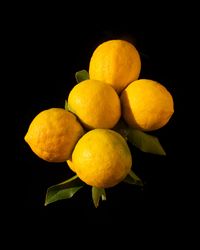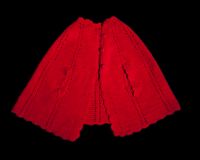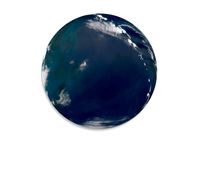TENT Art Weekend in New Zealand: Six Artwork Highlights
Despite lockdown in Tāmaki Makaurau Auckland, Aotearoa Art Fair's new initiative TENT is forging ahead from 4–7 November 2021, with 26 galleries presenting exhibitions outside their usual locations and online. Ocula highlights six artworks on view among over 300 by some 100 artists.
Elisabeth Pointon, Big Deal. (2018)
Presented online with Jhana Millers
Emerging Wellington artist Elisabeth Pointon hijacks manufactured forms associated with advertising—lightboxes, inflatables, banners, and street signs—to subvert the relentless boosterism of commerce. Pointon's Big Deal. reads as both a promise of a bargain and the complete opposite—the sarcastic dismissal of something utterly trivial.
The Indian-Pakeha artist, who previously worked in a luxury car dealership, produced the large inflatable work WHOEVER. (2021) that showed inside a Tiffany & Co. store for the Aotearoa Art Fair. An edition of the work, along with another large inflatable, BIG TIME. (2020) are now showing online at TENT.
As well as using manufactured forms to undermine advertising, Pointon is clearly entertained by their formal properties, as evidenced by her portraits of pool noodles.
Pointon has previously exhibited at the Dowse Art Museum in Porirua, Christchurch Art Gallery Te Puna o Waiwhetū, and City Gallery Wellington Te Whare Toi. —SG
Cora-Allan Wickliffe, Hiapo Toi (2021)
Presented online with Masterworks Gallery
Currently undertaking one of New Zealand's most prestigious residencies at McCahon House in Titirangi, Cora-Allan Wickliffe is a multidisciplinary artist of Māori and Niuean descent (Ngāpuhi, Tainui/Alofi, Liku).
Her practice to date has focused on efforts to revive the Niuean tradition of decorated barkcloth known as hiapo, which is distinguished from other barkcloth art forms by its use of white cloth instead of the tan ground prevalent across much of Polynesia.
Completing a Master's in Visual Art and Design at Auckland University of Technology in 2013, Wickcliffe only took up hiapo five years ago, having been inspired by her grandparents and established fellow Niuean artist John Pule.
Among works showing online with Auckland-based Masterworks Gallery is a small, square, delicate-looking work entitled Hiapo Toi (2021), part of a series the artist refers to as 'samplers'. Hiapo feature delicate botanical and geometric drawings, in this instance marked in browns and a soft shades of blue ink foraged from raw resources. —AD
Peter Stichbury, Untitled(2007)
Presented online with Michael Lett
Peter Stichbury's portraits are eerie in their appearance of flawlessness. Born in Auckland in 1969, Stichbury, whose early portraits borrowed greatly from advertising and images of celebrities, renders almost all his subjects as if they were the same age, in their early 20s, like fashion models or Instagram influencers.
It's the eyes—too wide and too widely spaced—that suggest something alien or amiss. His series of works painted on lawn bowls magnify this visual distortion and imbue it with psychological depth.
Stichbury exhibited some of his lawn bowl works at Starkwhite, Auckland in a 2006 exhibition called Passport to Magonia. The title comes from Jacques Vallee's 1969 book Passport to Magonia: From Folklore to Flying Saucers, which places 20th-century UFO sightings in a tradition stretching back to antiquity.
In 815 AD, for instance, Carolingian bishop Agobard of Lyon complained that locals believed the inhabitants of Magonia travelled the clouds in ships. —SG
Fiona Pardington, The Sun, The Satyr (Tarota) (2021)
Presented by Starkwhite, Auckland at Parlour Projects, Hawkes Bay
Leading photographer Fiona Pardington's latest series of work, showing with Starkwhite in Hawkes Bay's Parlour Projects, originates from the paintings of Giorgio Morandi (1890–1964), but are also influenced by British occultist and painter Austin Osman Spare (1886–1956), who delved into symbolism and the power of the subconscious.
The restrained space and muted palette of creamy whites, pale blues, and hints of pink dominating Pardington's newest images are reminiscent of Morandi's paintings, but unlike Morandi's pared-back approach, Pardington presents a wide range of very personal objects against a sumptuous black background.
In The Sun, The Satyr (Tarota) (2021), vertical vases are staggered around a larger round vase brimming over with yellow flowers, a symbol of abundance perhaps. Around them are an assortment of other items: delicate feathers, a soft scarf, a black record, an antique mirror, and a translucent pink skull.
Mist drifts across and between the objects, suggesting mystery, the ephemeral—memento mori. —AD
Ed Bats, The leaky boat (2021)
Presented online with Page Galleries
Ed Bats is not Ed Bats. The name is a pseudonym adopted by the Capetown-born artist while painting graffiti around Aotearoa New Zealand and in Europe. The Wellington-based artist's works are remarkably restrained for someone with a background in street art, instead suggesting design or architecture, or the blocks of colour that are left after graffiti has been painted over.
Bats' paintings have been placed in the traditions of constructivism, hard-edge abstraction, colour field painting, minimal assemblage, and Arte Povera. His work, The leaky boat (2021), is an 80cm x 2m-tall acrylic on canvas painting rendered in hues that suggest a chic pair of swim shorts. —SG
Elizabeth Thomson, Nyx c (2021)
Presented by Two Rooms
Presented by Two Rooms at the home of art consultant Kate Darrow, Elizabeth Thomson's new 'exoplanet' artwork will share wall space with a singular hemisphere work by Gretchen Albrecht. The pairing is poignant, with two of New Zealand's most respected female artists paying homage to the interaction of science and art in the very week world leaders meet in Glasgow to discuss climate change.
Thomson's large and elegant wall sculpture—comprised of fibreglass and resin overlaid with vinyl and lacquer—presents what looks like an image of planet earth, with soft smudges of clouds drifting above an expanse of oceans.
Entitled Nyx c (2021), the work is part of the artist's series 'Lateral Theories', which she first showed earlier this year in an exhibition at Two Rooms.
The series references both the artist's ongoing interest in aerial perspectives and satellite imaging, but also her research into 'exoplanets', planets that orbit other stars separate from our own galaxy. —AD —[O]



